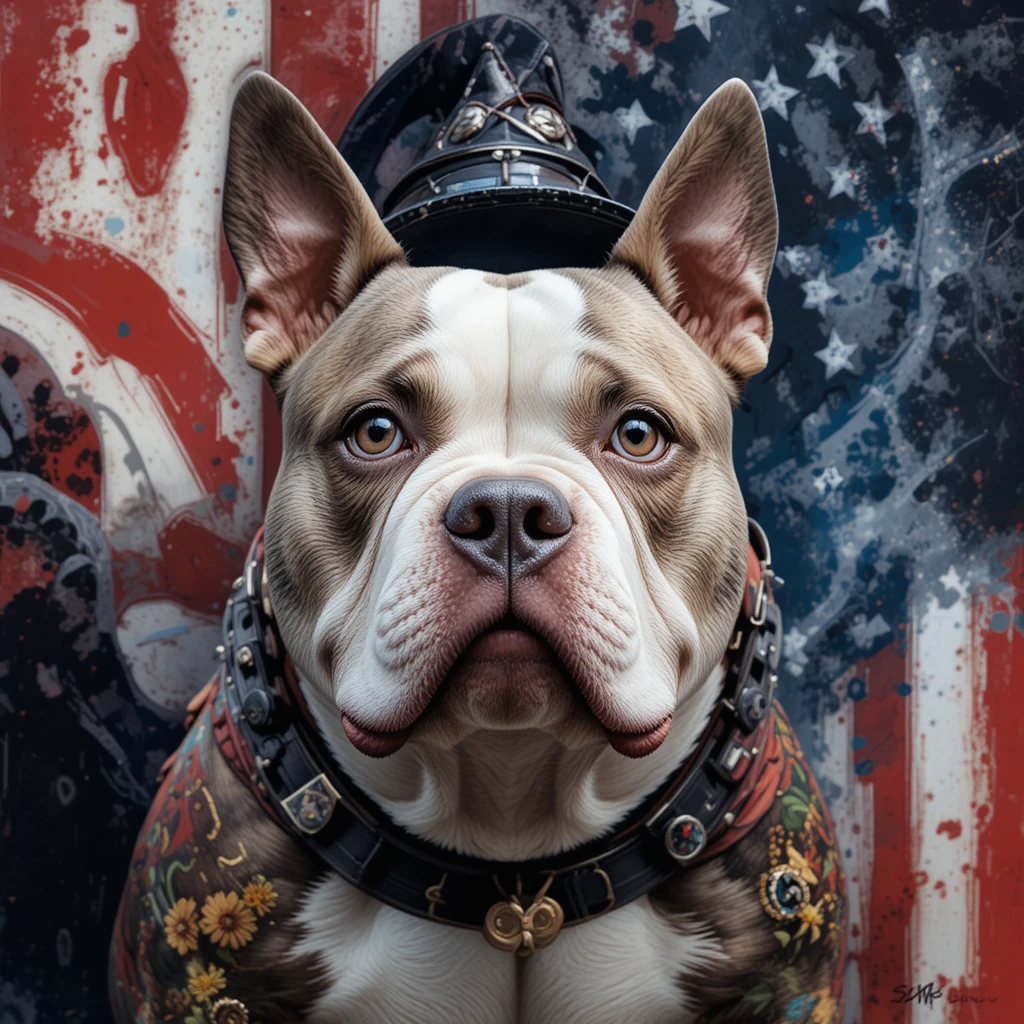When XL Bully Deadline Missed
What happens when XL Bully Deadline Missed and what to do . Here you can see , I remember when someone close to me missed the XL Bully registration deadline—it was one of the most stressful days they’d faced as a dog owner.They felt completely alone, unsure of what to do. But I told them the truth: this isn’t the end. Taking swift action is what saved them. Acting fast made a difference, and they followed a straightforward path with clear steps. We sat down together to figure out what to do next, and I helped them manage the unexpected legal consequences that came with the situation.
The experience taught me that being caught in a time-bound situation like this doesn’t mean you’re out of options. Sometimes, all you need is a little guidance—a lifeline—to steer through the confusion. It’s about staying informed, organized, and ready to move. There is always a way forward, even if things feel overwhelming at first.
Table of Contents

The Consequences of Missing the Deadline
I once helped someone who had unknowingly missed the deadline for registering their XL Bully dog, and the consequences hit harder than they expected. What they thought was a small delay turned into an absolute offence, a serious matter that brought real fear.
- Soon, officers were involved, warning of enforcement actions, including the possibility of the dog being seized.
- The emotional toll was immense—facing the risk of euthanasia was like watching a beloved pet be judged without cause.
- All of this happened simply because of missing the legal registration deadline for a banned breed.
- Suddenly, they were looking at unlimited fines, a criminal record, and possibly being labelled under public safety concerns.
- Even proportionate action could result in destruction, regardless of the dog’s behaviour, if the owner was seen as unfit.
- Many are still confronting this scenario, not realizing the long-term repercussions of resistance to the ban.
Still, I encouraged them to not lose hope. A glimmer of a solution existed:
- You can make a civil application under Section 4B, even after the court ruling.
- This route may help in opting out of a criminal record by acquiring a different legal outcome.
- But this path is not easy—it’s a daunting prospect, often blocked by significant financial burdens, high legal costs, and no access to legal aid.
- One must understand that making this choice might spare the dog from destruction and avoid permanent legal damage.
- While the horizon seems dark, being aware of every outcome gives a better chance to regain control.
Immediate Actions to Take
After the XL Bully deadline missed, the best thing for owners to do is to seek expertise from a Dog Legislation Officer or Warden. These professionals provide essential guidance and act as a compass through the complex legal situation. They help owners understand the possible penalties and offer a clear plan to navigate the tough circumstances. This kind of advice is critical in a time when the gravity of the issue can feel overwhelming.
Another important step is to contact your local police force without delay. This shows compliance and a willingness to rectify the situation. Taking immediate action and following the right steps sheds light on the path forward. Although it may feel like a turbulent time, acting swiftly and with the right support helps owners protect their cherished pets and move closer to securing a better future. From my experience, staying calm and following expert advice is key to overcoming these challenges.
Navigating the Exemption Process
Navigating the exemption process after the XL Bully deadline missed can feel like a high-stakes maze, but it is essential for owners to keep going. The journey involves lengthy assessments and meeting stringent criteria set by authorities. Despite the challenges, the reward is a Certificate of Exemption, a vital document that offers a fresh hope for XL Bully owners and their dog. This certificate protects them from the harsh penalties that come with non-compliance and allows their beloved pets to stay safe.
Another important part of the process is securing third-party public liability insurance, which is an annual commitment that all owners must carefully uphold. The contours of the exemption process vary by regions, so especially for Scottish owners, checking the latest updates and instructions on government websites is crucial. From my experience, staying informed and patient while following these steps can make a big difference in successfully navigating this tough legal path.
Contacting Local Authorities
After missing the deadline, the first step is to reach out to your local police force without delay. This is not just a formality but a vital move to start the exemption process and obtain the Certificate of Exemption you need. The guidance from the police helps ensure you meet all legal requirements and stay in compliance with the rules. I’ve seen how important it is to be proactive and responsive during this time to avoid any confusion or invalid email communications that could complicate things further. Trust me, contacting the right authorities early can save a lot of trouble down the line.
- Reach out to your local police force immediately after the deadline is missed.
- Ensure all communications are clear and valid to avoid delays.
- Obtain the necessary Certificate of Exemption as soon as possible.
- Stay in close contact with the Dog Legislation Officer who can guide you through the legal process.
- Secure third-party public liability insurance as a legal and safety requirement.
- Be aware of regional differences, especially in England and Wales, and follow their specific instructions.
- Avoid dealing with unofficial or illegal organisations to protect yourself and your dog.
- Demonstrate your commitment to both your pet and public safety by following the law strictly.
The Dog Legislation Officer is another key contact who brings essential knowledge and acts as a guide through the complex nuances of the law. Securing third-party public liability insurance is a crucial responsibility, not just a legal checkbox but a commitment to public safety for both owners and their dogs. In regions like England and Wales, working closely with local authorities shows your commitment to your pet and the society at large. Navigating this process requires care and dedication, but with clear direction and timely action, you can protect your XL Bully and yourself within the UK’s strict dog legislation framework.

Gathering Required Papers and Appealing Decisions
Deadlines set by DEFRA push XL Bully owners to act quickly, especially when it comes to proof of neutering or a microchip number for puppies under 8 weeks old by March 31, 2024. These dates are strict and depend on the dog’s age as of January 31, 2024. Collecting all necessary documents like microchip and neutering certificates shows your responsible ownership and helps prove your dog qualifies for legal exemption. If money is tight, don’t forget groups like the RSPCA in England and SSPCA in Scotland offer financial assistance for neutering costs, easing the burden in these tough times.
If your exemption is denied, don’t lose hope. You can appeal through local police forces or other relevant authorities, using the chance to contest your dog’s label as an XL Bully in court. Showing your dog’s good behaviour and calm temperament can influence the judge’s decision and avoid a destruction order. But be aware, legal battles bring extra financial strain with legal proceedings and kenneling costs. Still, if a destruction order is given, you have a 21-day grace period to appeal. Having a good legal representation is like a lighthouse in this storm, guiding you through the complex process and protecting the future of your XL Bully.
Responsibilities of XL Bully Owners
Owning an XL Bully means more than just love; it demands serious responsibility. One key duty is keeping up with annual third-party liability insurance to show commitment to safety and accountability. Owners must also keep the Index of Exempt Dogs updated with changes like address or if the dog has passed away. It’s important to be ready to prove compliance whenever asked by authorities, showing you take your duties seriously.
Physical safety is another big part of responsibility. XL Bullies need secure fencing and constant supervision to stop any escape or trouble. When outside, they must be muzzled and walked by someone at least 16 years old, which helps protect the public. Training your dog to accept a muzzle takes time and patience—start with a comfortable muzzle, use positive reinforcement, and slowly help your dog get used to it. If needed, get help from a professional. This care ensures your XL Bully stays safe and well-behaved in every situation.
Support and Resources for XL Bully Owners
When the XL Bully deadline is missed, the financial burden of necessary actions like neutering can feel heavy. Luckily, local rescue organizations and various organizations often extend a hand to help owners manage the fees related to exemption applications or other costs. This is truly a community effort, reminding every XL Bully owner that they don’t have to navigate these tough waters alone. Having this kind of support makes a big difference when deadlines are tight and challenges arise.
On the other hand, muzzle training programs offered by groups like Dogs Trust provide a complimentary program that’s essential for responsible ownership. These programs help build a strong bond of trust and understanding between the owner and the pet. It’s not just about following rules, but about making the whole process easier and safer for everyone involved. In my experience, this combination of financial aid and training resources creates a solid foundation for overcoming deadline setbacks while keeping your XL Bully safe and well cared for.
Addressing Public Concerns and Misconceptions
The story around XL Bullies is often shaped by irresponsible breeding and poor ownership, rather than the breed itself. In my experience, with the right consistent training, proper socialization, and positive reinforcement training, an xl bully type dog can stay calm and handle many situations with poise. Their physical strength means they need responsible ownership and plenty of sufficient exercise. Too often, these dogs are wrongly labeled as inherently aggressive, but many, like the American Bully XL, are truly protective, loyal, and affectionate companions.
It’s important to clear up common misconceptions, such as the false idea of a unique locking jaw mechanism—no such anatomical feature exists. Programs like Dogs Trust’s online masterclasses for children help promote safe interactions and teach a deed-not-breed approach that focuses on each dog’s individual behaviour, not just the breed. Changing how we see these dogs and supporting fair policies that understand the nuances of dog behaviour is key to keeping the public safe and fostering respect for these powerful but misunderstood breeds.
Preventing Future Problems for XL Bully Owners
The conversation around breed-specific legislation needs a real shift. From my experience, community education plays a big role in helping owners and the public dispel myths and understand the true value of responsible ownership instead of falling into breed discrimination. We must keep advocating for laws that hold owners accountable, which is essential for public safety and preventing future incidents. Showing that banned breeds like the XL Bully can be loving family pets, loyal service animals, and capable companions helps to fight the negative stereotypes and creates a more inclusive understanding of these dogs.
At the same time, collaborating with animal advocacy groups gives owners tools to combat breed-specific laws and encourage responsible pet ownership. Getting involved in community discussions, leveraging social media, and participating in public meetings are powerful ways to oppose ineffective legislation and suggest better solutions. Persistent advocacy is important, especially when officials and community members stand with the cause. Also, education about the Dangerous Dogs Act and local laws helps prospective dog owners avoid unintentional non-compliance and protects their canine companions legally and safely

FAQ
What will happen if I don’t get my XL Bully neutered?
If your XL Bully is not neutered, it can lead to unwanted puppies and may increase behaviors like aggression or marking territory. Also, some local laws or breed rules require neutering, so skipping it might cause legal trouble or fines.
What happens if the owner of an XL Bully dies?
If the owner dies, the dog’s care usually passes to family, friends, or someone the owner trusts. It’s important to have a plan for who will take care of the XL Bully to make sure it stays safe and loved.
What to do if you see an XL Bully?
If you see an XL Bully, stay calm and avoid sudden moves. Don’t stare or act aggressively. If the dog is with its owner, let them handle it. If the dog is loose or looks dangerous, call animal control or local authorities.
What is the life expectancy of an XL Bully?
The typical life expectancy of an XL Bully is about 10 to 14 years, depending on their health, diet, exercise, and care.
New Puppy Cries at Night 6 Guildlines for New Owners
Sileo for Dogs: 10 Game-Changing Anxiety Relief Remedies

